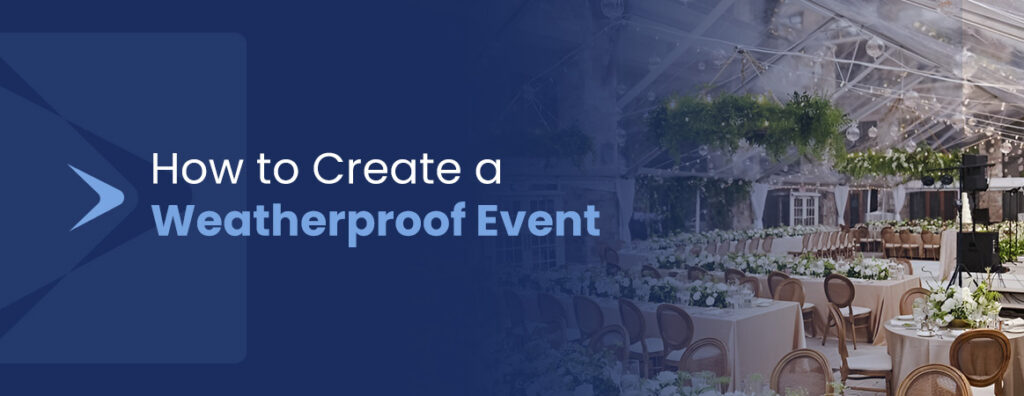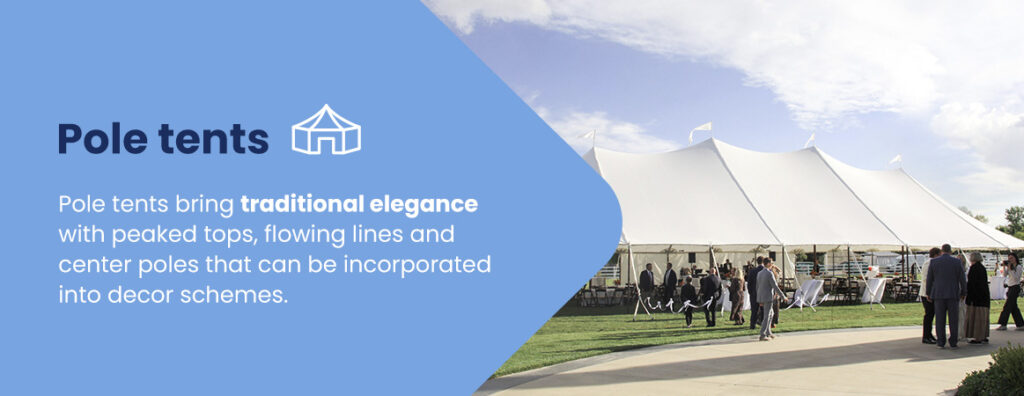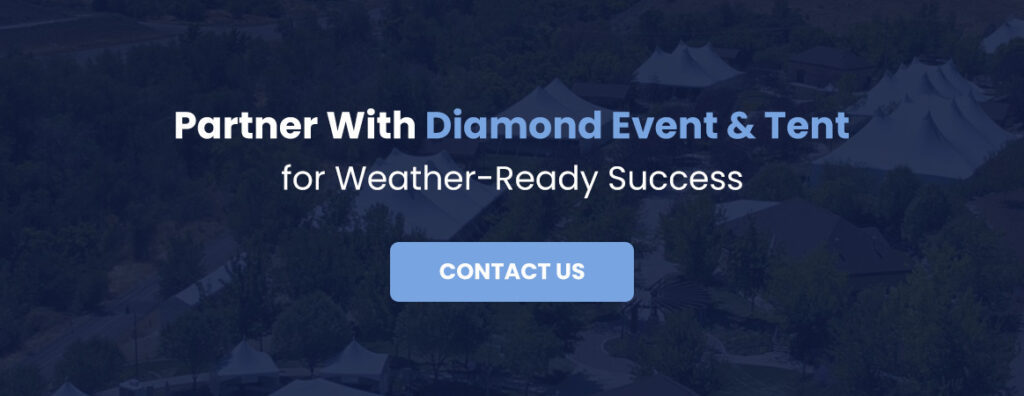
Outdoor event planning in Utah requires more than choosing the perfect venue and menu. Weather is a central consideration that determines your event’s success. From sudden summer thunderstorms to unexpected spring snowfall, Utah’s diverse climate demands thoughtful preparation.
Whether you’re organizing a corporate gathering, wedding reception or community festival, understanding how to create weatherproof events ensures guest comfort regardless of Mother Nature’s plans.
Smart outdoor event planning means anticipating multiple weather scenarios and preparing for each possibility. The key to success is understanding that Utah weather can change rapidly, sometimes presenting multiple challenges within a single event.
Being prepared for various weather scenarios is essential for protecting your guests, preserving your venue and ensuring your celebration proceeds smoothly.
The most common weather-related challenges for outdoor events include:
Selecting the right tent is the foundation of successful outdoor event planning. The appropriate tent provides shelter and creates a controlled environment where you can manage various weather conditions effectively. Understanding different tent styles helps match your choice to event needs and potential weather challenges.
Common types of tents include:

Proper tent sizing ensures adequate space for guests, especially during inclement weather. Sufficient space also allows for heating equipment in winter, cooling systems in summer or coat check areas during unpredictable weather.
Raised flooring systems prevent water intrusion, create level surfaces over uneven ground and provide insulation from cold earth. Another key consideration in tent planning for events is sidewalls. Sidewalls transform any tent into a more controlled environment, blocking wind, rain and sun while retaining heating or cooling. If you want to maintain views while providing protection, consider clear sidewalls.
Event weather protection requires specific strategies that go beyond basic shelter. Here are essential outdoor event tips for managing various weather scenarios.
Effective rain protection for events begins with proper site assessment and preparation. Professional event planners evaluate natural drainage patterns and modify them as needed to direct water away from tent installations. This preparation prevents pooling, which can undermine tent stability and create safety hazards.
Installing rain gutters along tent edges channels water away from entrances and high-traffic areas. Connected downspouts direct this flow away from the event space, preventing erosion and mud formation. For multi-tent layouts, covered walkways protect guests as they move between different areas.
Ground protection based on expected conditions and venue restrictions is also crucial. Temporary flooring over grass prevents mud formation while protecting the underlying lawn, and subflooring protects lawns from damage while giving events a polished, professional appearance. Strategic placement of gravel in high-traffic areas provides traction and reduces mud tracking. Indoor-outdoor carpeting at entrances helps control moisture entering tent spaces, maintaining cleaner, safer conditions throughout your event.
Heat protection for events requires mechanical cooling and strategic planning. High-volume fans create air circulation that can reduce perceived temperature by several degrees. Positioned correctly, fans also help dissipate humidity that builds under tent canopies. For demanding conditions, evaporative coolers provide cost-effective temperature reduction in Utah’s dry climate.
Misting systems installed around tent perimeters offer immediate cooling through evaporation. These systems work particularly well in low-humidity conditions, though placement requires care to avoid over-wetting surfaces. For premium events, portable air conditioning units maintain comfortable temperatures even during heat waves.
Hydration stations positioned throughout the venue encourage regular water consumption. Multiple water stations separate from bar areas ensure easy access without wait times. Providing shade options beyond the main tent, such as market umbrellas in cocktail areas, creates comfortable spaces for mingling.
Professional tent installation is an essential part of wind protection for events. Experienced crews understand local wind patterns and engineer anchor systems accordingly. Concrete ballast blocks, water barrels or stakes must be sized for maximum expected wind loads, not average conditions. Guy lines and ratchet straps provide additional stability for all tent types.
Creating windbreaks from solid fence panels or natural features reduces wind impact on event spaces. These barriers work best when positioned perpendicular to prevailing winds, establishing protected zones for sensitive areas like food service or entertainment stages. All loose items, including signage, centerpieces and decor, must be secured or removed before windy events.
Heating strategies for cold-weather events balance effectiveness with safety. Propane heaters remain the standard for tent events, offering powerful, adjustable heat output. Forced-air units distribute warmth throughout spaces, while radiant heaters provide targeted comfort in specific zones.
Supplementary warming measures enhance comfort beyond mechanical heating. For example, tent liners add insulation while improving aesthetics, and providing blankets or wraps as guest favors is a practical way to make the event memorable. Hot beverage stations featuring coffee, cocoa and cider create gathering points while helping guests stay warm.
Professional event contingency planning begins weeks before your event. Weather monitoring should start at least two weeks out, with increasing attention as the date approaches. Utah’s variable climate means conditions can shift rapidly, making consistent observation essential for informed decision-making. Here are some strategies:

Creating successful weatherproof events demands experience, quality equipment and flawless execution. Diamond Event & Tent brings decades of expertise to every event, from intimate gatherings to large-scale celebrations. Our comprehensive inventory includes professional-grade tents, catering supplies and flooring solutions designed to handle Utah’s diverse conditions.
We deliver rentals and provide consultative planning that anticipates challenges before they arise. When you’re ready to create an unforgettable event that succeeds in any weather, contact Diamond Event & Tent and let our expertise become your advantage.
© Diamond Event, Inc. | Built by Twelve Legs Marketing